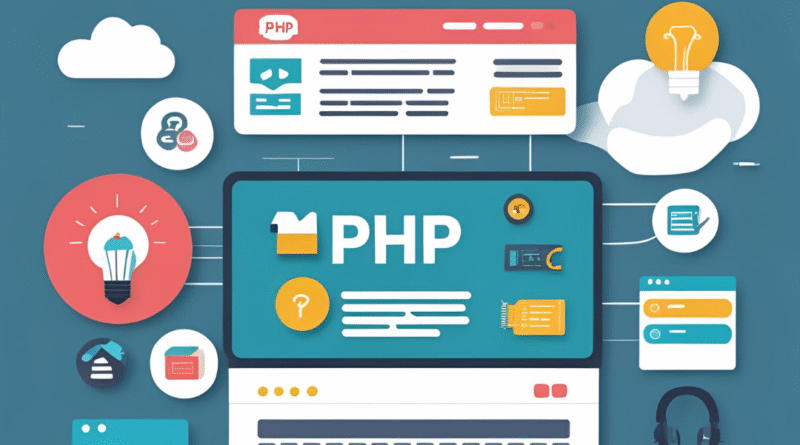PHP Object-Oriented programming (OOP):- Properties and methods (public, private, protected)
In the world of web development, PHP stands as a powerful and versatile language. When it comes to building complex and maintainable applications, Object-Oriented Programming (OOP) in PHP is your best friend. Today, let’s unravel a core concept of OOP: properties and methods, and understand how their visibility (or access) is controlled using keywords like public, private, and protected.
Understanding Properties and Methods: The Building Blocks of Objects
Imagine you’re designing a blueprint for a car.
- Properties are like the attributes of the car: its color, its number of wheels, its current speed. In PHP OOP, these are variables defined within a class.
- Methods are like the actions the car can perform: accelerate, brake, turn on the lights. In PHP OOP, these are functions defined within a class.
Together, properties and methods define the characteristics and behaviors of an object created from that blueprint (class).
Controlling Visibility: public, private, and protected
Now, not all attributes or actions need to be accessible from everywhere. This is where the access modifiers public, private, and protected come into play. They dictate who can see and interact with your properties and methods.
1. public: Open for Everyone!
Think of public as a front door wide open.
- What it means: A
publicproperty or method can be accessed from anywhere. This includes code within the class itself, code in classes that inherit from it, and code outside of the class (e.g., when you create an object of that class). - When to use it: For properties and methods that are essential for the object’s interaction with the outside world. For example, a
getColor()method to retrieve the car’s color, or astartEngine()method.
<!– end list –>
PHP
<?php
class Car {
public $color; // Public property
public function accelerate() { // Public method
return "Car is accelerating!";
}
}
$myCar = new Car();
$myCar->color = "Red"; // Accessible
echo $myCar->accelerate(); // Accessible
?>
2. private: My Eyes Only!
private is like a secret diary – only you can read and write in it.
- What it means: A
privateproperty or method can only be accessed from within the class where it is defined. No outside code, and not even inheriting classes, can directly touch it. - When to use it: For internal workings of the class that shouldn’t be exposed or modified directly from the outside. This helps maintain the integrity of your object’s state. For example, a property storing the car’s internal engine temperature (which should only be managed by internal methods).
<!– end list –>
PHP
<?php
class Car {
private $engineTemperature = 20; // Private property
private function regulateEngine() { // Private method
// Logic to regulate temperature
return "Engine temperature regulated.";
}
public function checkEngine() {
return "Current temperature: " . $this->engineTemperature . ". " . $this->regulateEngine();
}
}
$myCar = new Car();
// echo $myCar->engineTemperature; // Fatal error: Cannot access private property
// echo $myCar->regulateEngine(); // Fatal error: Cannot call private method
echo $myCar->checkEngine(); // Accessible through a public method
?>
3. protected: Family Business!
protected is like a family recipe – only you and your direct descendants (inheriting classes) can access it.
- What it means: A
protectedproperty or method can be accessed from within the class where it is defined and from any class that inherits from it. It’s still not accessible from outside the class hierarchy. - When to use it: When you want to provide certain functionalities or data to subclasses for them to extend or utilize, but still keep it hidden from the general public. For instance, a base
Vehicleclass might have aprotectedmethod for calculating fuel efficiency, which specificCarorTrucksubclasses can use.
<!– end list –>
PHP
<?php
class Vehicle {
protected $fuelCapacity; // Protected property
protected function calculateRange() { // Protected method
return "Calculating range based on " . $this->fuelCapacity . " liters.";
}
}
class Car extends Vehicle {
public function __construct($capacity) {
$this->fuelCapacity = $capacity; // Accessible
}
public function getCarRange() {
return "Car range: " . $this->calculateRange(); // Accessible
}
}
$myCar = new Car(50);
// echo $myCar->fuelCapacity; // Fatal error: Cannot access protected property
// echo $myCar->calculateRange(); // Fatal error: Cannot call protected method
echo $myCar->getCarRange(); // Accessible through a public method in the child class
?>
Why Do We Need Them? The Power of Encapsulation!
These access modifiers are fundamental to a core OOP principle called Encapsulation. Encapsulation is about bundling data (properties) and methods that operate on that data into a single unit (the object), and restricting direct access to some of the object’s components.
By using public, private, and protected effectively, you:
- Control Data Integrity: Prevent accidental or malicious modification of an object’s internal state.
- Improve Code Maintainability: Changes to internal implementation won’t break external code as long as the public interface remains consistent.
- Promote Reusability: Well-encapsulated objects are easier to reuse in different parts of your application or in new projects.
- Enhance Security: By limiting access, you reduce the attack surface for potential vulnerabilities.
In essence, public, private, and protected are your tools to build robust, secure, and maintainable PHP applications using the power of Object-Oriented Programming. Master them, and you’ll be well on your way to writing elegant and efficient code!


